My shopping cart
Your cart is currently empty.
Continue ShoppingDealing with a door that won’t stay closed or opens unevenly? Learn how to fix loose door hinges with this straightforward guide. You’ll be able to restore your door’s functionality in no time.
Maintaining your home’s doors is essential for both security and everyday convenience. One of the most common issues homeowners face is loose door hinges, which can lead to a loose door, misalignment, or even security concerns if left unaddressed. Fortunately, fixing loose door hinges is a straightforward DIY task when you understand the causes and have the right tools on hand.
Loose hinges often result from stripped screw holes, worn-out wood, or simply the natural wear and tear that comes with frequent use. Recognizing these problems early allows you to take action before they become bigger issues. Effective repair methods include using wood glue and wooden dowels to fill stripped holes, installing longer screws for a stronger hold, and tightening or replacing existing screws to secure the hinge.
Regular maintenance—such as tightening screws, oiling hinges, and inspecting for signs of wear—can help prevent loose hinges from developing in the first place. Tackling these repairs yourself can be both cost-effective and satisfying, but it’s important to know your limits. For more complex door repairs or if you’re unsure about the process, don’t hesitate to call a professional to ensure your doors remain secure and functional.
By following the right steps and using quality materials, you can fix loose door hinges, restore your door’s stability, and keep your home safe and comfortable.
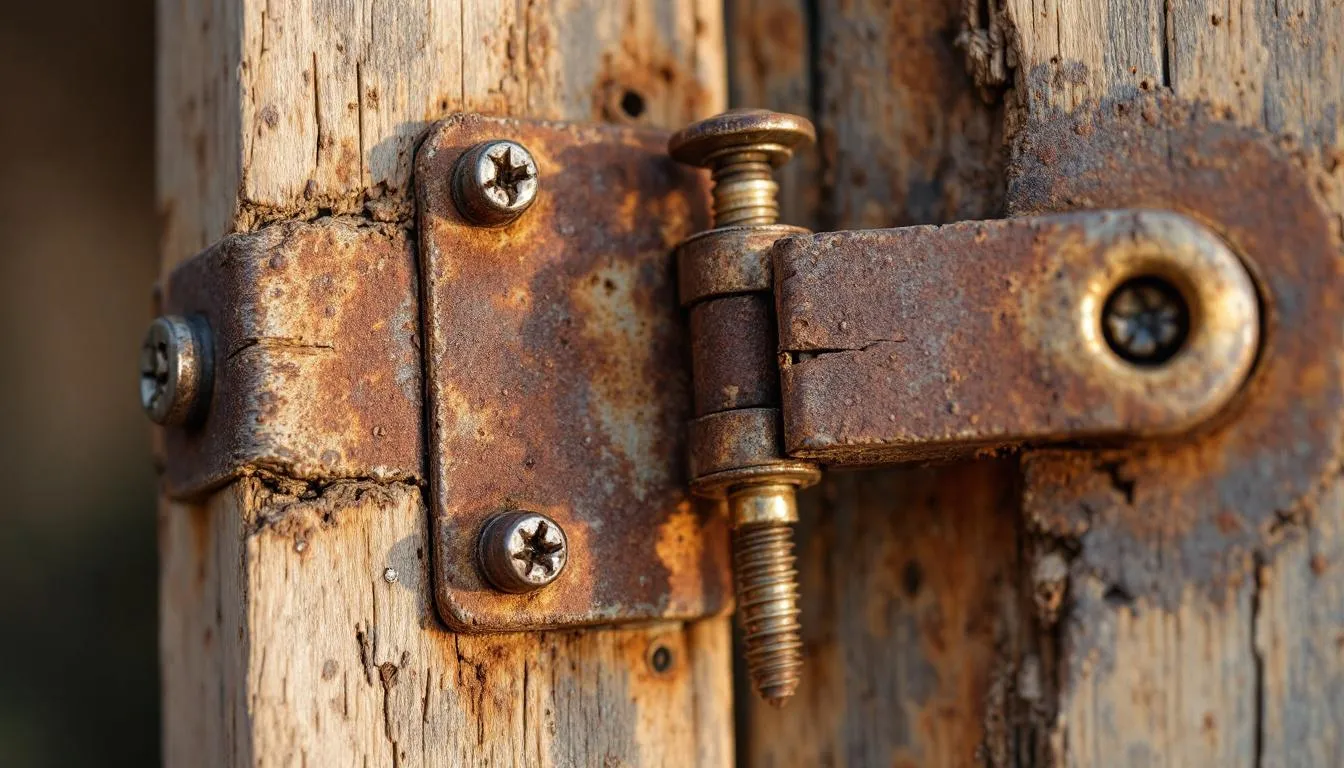
Identifying the problem is fundamental when tackling loose door hinges. Common signs of loose door hinges include squeaking, misalignment, and difficulty in opening or closing doors. A door that hangs unevenly or sticks is likely suffering from hinge issues.
Crooked hanging doors due to misaligned hinges can cause various functional issues. This misalignment might make it seem like the door frame is the problem, but addressing the hinge alignment can often resolve the issue. Properly aligned door hinges greatly enhance door functionality.
Identifying these issues helps in selecting suitable repair methods to restore door functionality. Whether it’s a squeak that needs silencing or a door that needs realigning, knowing the signs is the first step toward fixing the problem.
Knowing the causes of loose door hinges helps prevent recurring issues. One primary factor is regular use, which causes wear on hinges, leading to loose screws and weakened wood. Over time, the constant opening and closing of doors can loosen the screws, making the loose hinge less effective.
Environmental factors also play a significant role. Fluctuations in temperature and humidity can cause the wood to expand or contract, which may loosen screws or even warp the door frame. In coastal areas, high humidity levels can increase the likelihood of metal hinges corroding, negatively impacting their performance.
Heavy doors exert more strain on hinges, especially if the hinges are not suited for the door’s weight. This additional weight can accelerate the loosening process, making it crucial to use appropriate hinges for heavier doors. A loose door hinge due to improper installation is another common reason for door hinges becoming loose. Correct initial installation of hinges can avoid many problems.
Creaking or squeaking sounds during door operation are often the first signs that the hinges are under stress and need adjustment. Addressing these sounds promptly can prevent further damage and maintain the door’s functionality.
Gather all necessary tools before starting to fix loose door hinges. Having all materials ready beforehand is crucial. A screwdriver or electric drill is needed for handling screws. An electric drill with various bits and a hammer is useful for stubborn screws and precise adjustments.
Tips for reinforcing stripped screw holes and reattaching original screws:
Other useful materials include wood glue, which ensures a strong bond when inserting dowels into stripped holes, and golf tees or toothpicks, which can serve as makeshift dowels in a pinch. Wooden matches and wooden plugs are also effective alternatives for filling stripped screw holes. Wedges can be used to fill and reinforce stripped holes as well. Preparing a new pilot hole after dowel insertion is crucial for achieving a secure fit for the screws—drilling a pilot hole before inserting a screw or dowel helps prevent splitting the wood and ensures a secure fit. Using fillers or dowels with the same diameter as the original screw ensures the repair is strong and prevents the need for additional drilling. Optional items like a utility knife, paint, and a bit of wood filler can also come in handy for minor repairs and finishing touches.
Door hinge problems come in several forms, each requiring a different approach to repair. The most common issue is loose door hinges, where the screws holding the hinge to the door or frame have worked loose over time. This can cause the door to sag, stick, or fail to close properly. Another frequent problem is stripped screw holes—when the wood around the screw holes becomes worn or damaged, the screws can no longer grip securely, making it difficult to keep the hinge in place. Misaligned doors are also a concern, often resulting from improper hinge installation or gradual wear and tear, leading to uneven gaps between the door and the frame.
Identifying the specific type of problem is essential for choosing the right repair method. For example, loose door hinges may only need the screws tightened, while stripped holes often require filling with wood glue and wooden dowels before reinserting the screws. Misaligned doors might need hinge adjustment or repositioning. By understanding whether you’re dealing with loose hinges, stripped holes, or misalignment, you can select the most effective way to secure and repair your door hinges, ensuring a long-lasting fix.
Safety should always be a top priority when repairing loose door hinges. Before starting any repair, make sure the door is properly supported—either by having someone hold it or by using a wedge or block to prevent it from falling when you remove the screws or hinges. Always wear protective gear, such as gloves and safety glasses, especially when using power tools like drills or utility knives, to protect yourself from splinters and debris.
If you’re unsure about any part of the repair process or feel uncomfortable handling tools, don’t hesitate to consult a professional. It’s better to seek help than risk injury or further damage to your door. Additionally, ensure the security of your connection to any online resources or guides you may be using, and if prompted by security checks or CAPTCHAs, verify that you are a human to maintain a safe and smooth repair experience. Taking these precautions will help you fix loose door hinges safely and effectively.
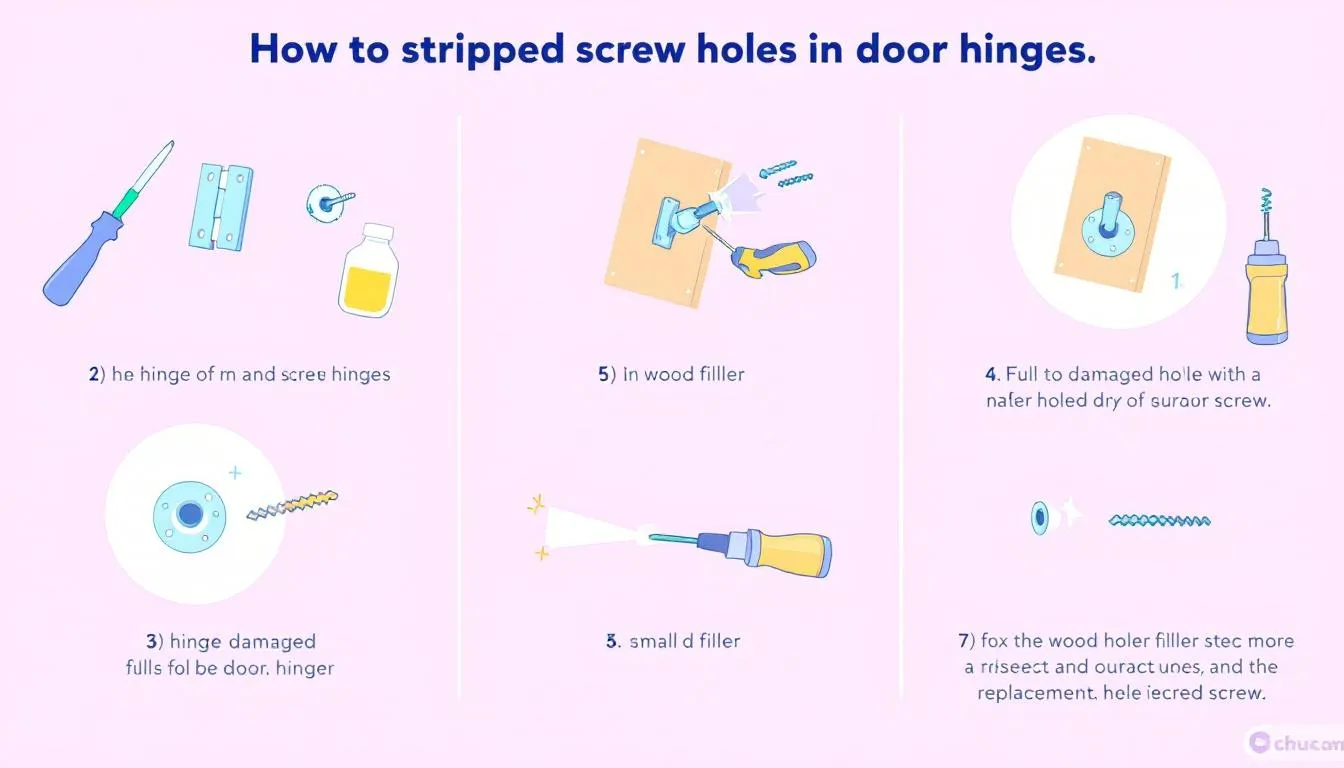
Repairing stripped screw holes in hinges can restore door functionality. Start by drilling out the damaged holes to remove any loose material. This creates a clean space for the repair. For best results, fill the drilled hole with a wooden dowel coated in glue, ensuring a secure fit for the stripped hole. Alternatively, you can fill the holes with wooden matches, toothpicks, or a wooden plug coated in glue as a quick fix.
Next, insert the wooden dowel into the drilled hole. If a wooden dowel is not available, you can use a stick or wedge of wood to fill the hole. Push it in until it is level with the wood surface to ensure proper hinge placement. Wood glue adds extra strength and stability to the dowel.
Once the wooden dowel is in place and the glue has dried, drill a pilot hole into the dowel. Drilling a pilot hole prevents screws from splitting the wood. Finally, drive the screws into the dowel, ensuring they are tight and secure. This method works well for restoring the bite of the screw in the wood and securing the hinge.
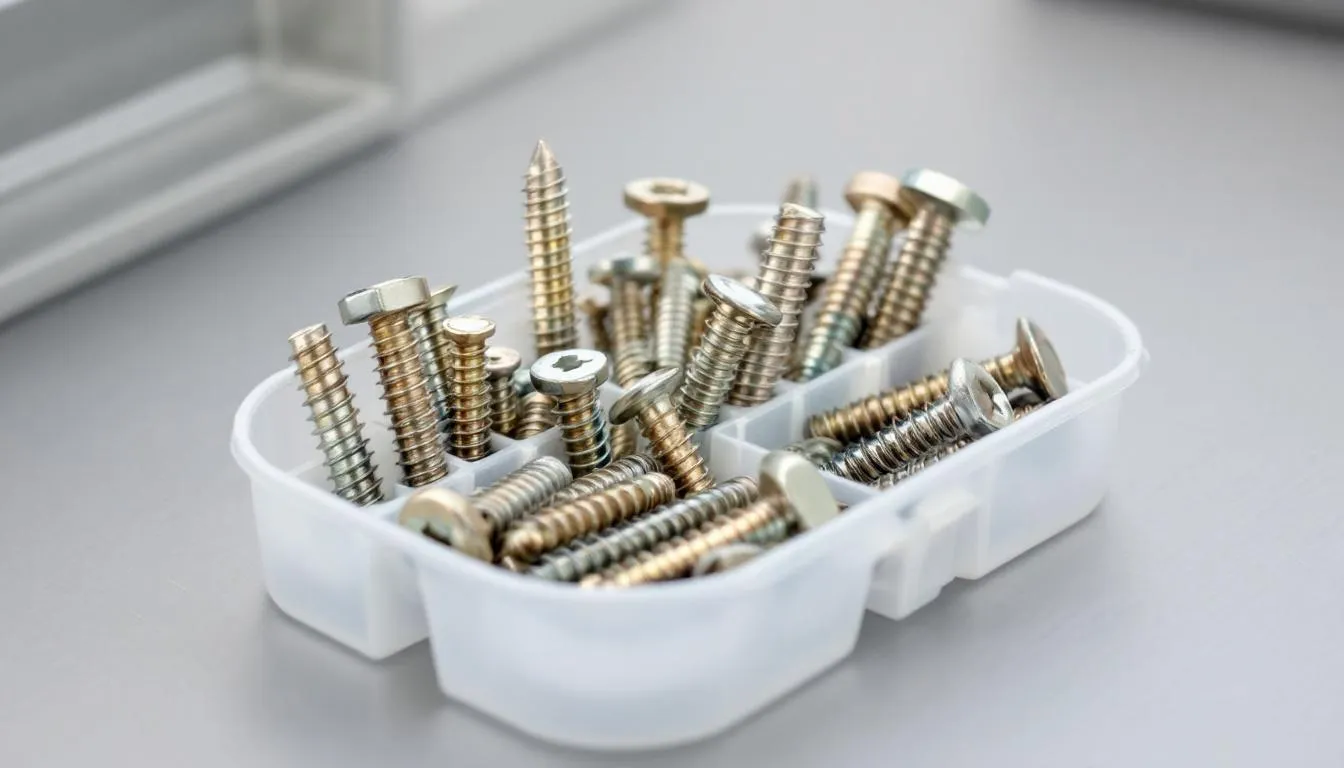
Reinforcing hinge screws can prevent future issues with loose door hinges. Replacing short screws in the top hinge with longer ones is effective. This helps secure the door more firmly and improves alignment.
To prevent further hinge and frame damage from loose screws, follow these steps:
For additional reinforcement, you can use a combination of longer screws and dowels. This method provides extra stability, especially for heavier doors. Using a manual screwdriver for the final tightening can prevent over-tightening and potential damage to the wood while driving screws.
Wood filler is a practical solution for minor repairs around hinge holes. For very small holes, inserting a wooden plug, matchstick, or toothpick as a plug before applying wood filler can provide extra support. Apply wood filler to stripped holes with a putty knife. Spread the filler evenly to fill the entire hole.
Allow the wood filler to dry according to the product’s instructions, which can range from 30 minutes to 6 hours. Apply a second layer of filler if the first shrinks below the surrounding surface.
Once the filler is dry, sand it down to create a smooth surface. Over time, you may need to reapply wood filler if it shrinks or wears away. This quick fix extends the life of door hinges and enhances functionality.
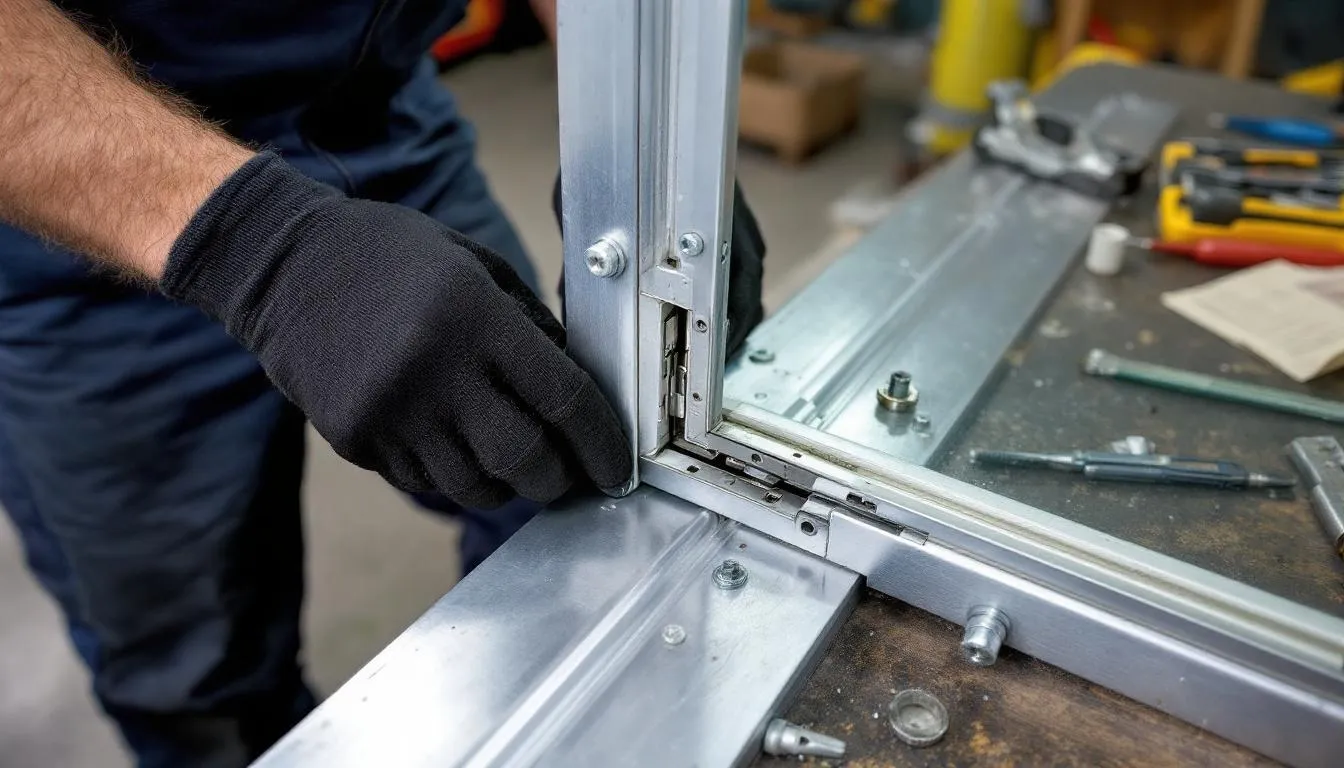
Hinge shims effectively correct door alignment issues. Shims are thin pieces of material that can be placed behind the hinges to adjust the door’s position.
Remove the top hinge screws and gently pry it away to install shims. Place the shims behind the hinge, making sure they are positioned away from the barrel to pull the door toward the hinge. Secure shims by tightening the screws opposite their placement.
Shims raise the door and correct alignment issues for smooth operation. This is particularly useful for sagged or unevenly worn doors.
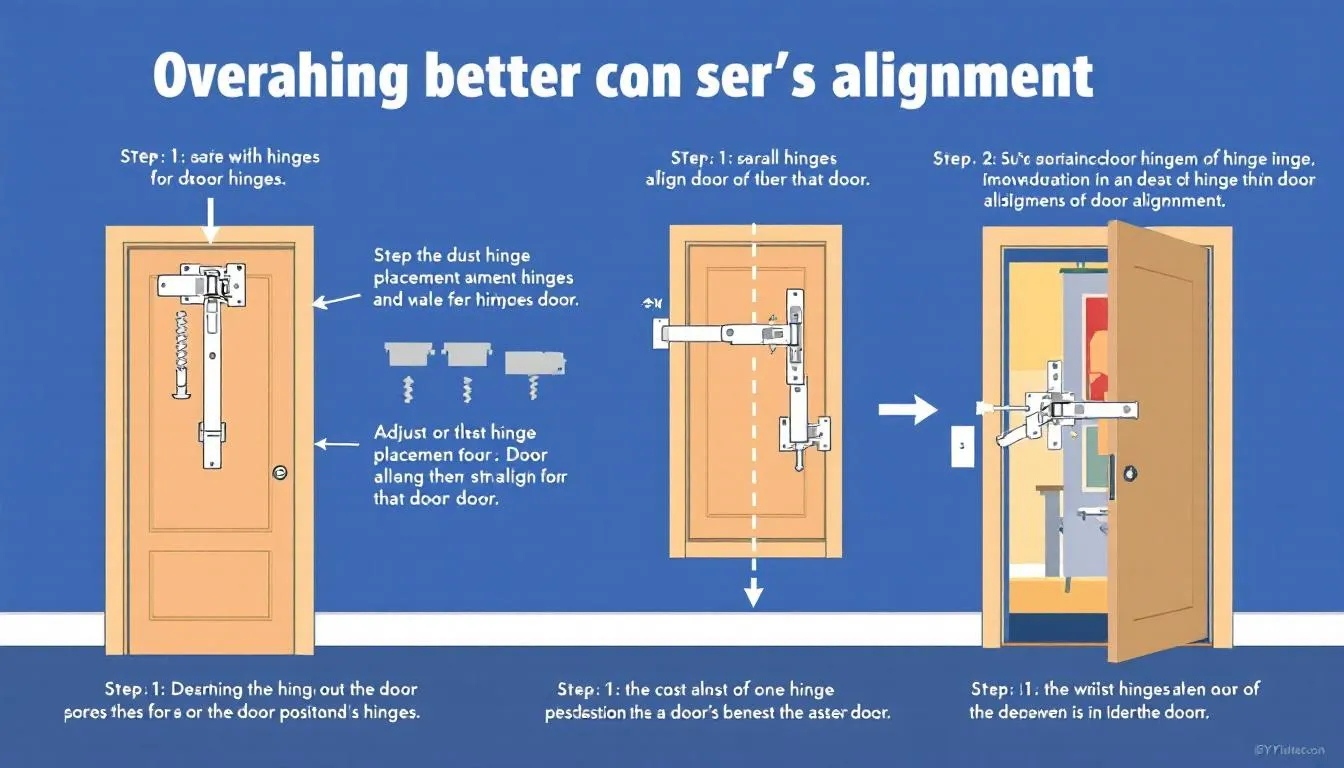
Repositioning hinges can resolve major alignment problems that tightening alone can’t fix. A sagging door scraping the floor often requires repositioning the hinge screw holes to replace the existing ones.
Start by listing some forbidden forms of the keyword “verify” according to the rule 5. Mark new holes hinge positions with a pencil to verify snap accuracy and prevent further misalignment. Self-centering drill bits create precise screw holes for correct hinge placement and hinge pins. Tap the marked positions to ensure alignment.
Ensure the hinge leaf is fully seated in the mortise to prevent the door from binding due to misalignment. Adjust incrementally to maintain a consistent gap between the door and door jamb for smooth operation.
If you’re looking for alternative ways to fix loose door hinges beyond the standard dowel or wood filler methods, there are several quick fixes you can try. One popular option is to use golf tees or toothpicks dipped in wood glue to fill stripped holes. Simply tap the golf tee or several toothpicks into the hole, snap them off flush with the surface, and let the glue dry completely. Drilling pilot holes into the filled area before reinserting the screw ensures the screws are properly anchored and helps prevent splitting the wood. Once dry, you can drive the screw back into the reinforced hole for a secure fit.
Another simple fix is to use longer screws of the same diameter as the originals. These longer screws reach deeper into the door frame, providing a better grip and helping to secure the hinge without extensive repairs. For added stability, especially on heavy doors, consider using hinge pins or small metal reinforcements to strengthen the connection between the hinge and the door frame.
These alternative methods are quick, cost-effective, and can be just as effective as traditional repairs, especially for minor issues with loose door hinges or stripped holes.
For more challenging cases of loose door hinges, advanced repair techniques may be necessary. If the existing screws are no longer holding, replace them with new screws of the same diameter and type to maintain the door’s stability. When screw holes are severely worn, specialized fillers designed for repairing screw holes can provide a strong base for the new screws.
If there’s a gap between the door and the frame, using a wooden shim or wedge can help fill the space and realign the door. This technique is especially useful for doors that have shifted over time or have experienced significant wear. In situations where the damage is extensive—such as a cracked door frame or a hinge that won’t stay secure—it may be necessary to replace the entire hinge or even the door frame itself. These repairs often require specialized tools and professional expertise.
Before proceeding with any advanced repairs, review the process carefully and verify the security of your connection to any guides or resources you’re using. Taking the time to plan and execute these repairs properly will ensure a safe, secure, and long-lasting result.
Misaligned doors are a common issue that can stem from loose hinges, worn-out screws, or an uneven door frame. To fix a misaligned door, start by examining the door’s position and identifying where the gaps or sticking points occur. Loosen the hinge screws slightly and adjust the hinge placement to bring the door back into proper alignment with the frame. Once the door is correctly positioned, tighten the screws to secure the hinge.
If there are still gaps or the door doesn’t sit flush, use shims or wedges to fill the space between the hinge and the frame. This provides extra support and helps maintain the correct alignment. For more severe misalignments, specialized tools like a hinge drill or a door frame repair kit can help you create new, precise screw holes and ensure a secure fit.
After making adjustments, always tighten the screws securely and verify that the door swings smoothly and closes properly. Completing these steps will ensure your door is both functional and secure, preventing future issues with loose hinges or misalignment.
Fixing loose door hinges can vary depending on the type of door you’re working with. Each door material and construction style presents unique challenges, so it’s important to choose the right method for the best results. Old ones, or older doors, may require extra care or reinforcement due to wear and previous repairs.
For heavy wooden doors, loose hinges often result from the extra weight pulling on the screws and screw holes. In these cases, reinforcing the door hinges is essential. Use longer screws to reach deeper into the door frame and provide a stronger hold. If the screw holes are stripped, insert wooden dowels coated with wood glue into the holes, let the glue dry, and then reattach the hinges with the original screws or new, longer screws. This approach ensures the loose door hinge is securely anchored and can handle the door’s weight.
Lighter doors, such as hollow core or interior doors, typically don’t require as much reinforcement. If you notice loose hinges on these doors, a simple fix like applying wood filler to the screw holes can be effective. Fill the holes with wood filler, allow it to dry completely, and then reinsert the screws. For minor misalignments, hinge shims can help adjust the door’s position without the need for extensive repairs.
For doors made of composite materials or metal, check that the screws are compatible with the material. Sometimes, replacing the existing screws with ones designed for metal or composite doors can resolve loose hinge issues. If the holes are stripped, use specialized fillers or plugs made for these materials to restore a tight fit.
No matter the door type, always ensure the hinges are flush with the door and frame, and that the screws are tightened securely. By tailoring your repair method to the specific door, you’ll achieve a longer-lasting and more reliable fix for loose door hinges.
Preventive maintenance is crucial for avoiding future loose hinges. Key practices include:
Avoiding excessive weight on heavier doors reduces hinge stress and loosening. Gentle closing of doors, especially in windy conditions, can minimize strain on hinges and prolong their lifespan. Additionally, ensuring that doors can swing freely will help maintain their functionality and drop any potential issues related to the door hinge.
These simple maintenance practices ensure smooth and quiet door operation for years, providing a simple fix for common issues.
Once you’ve completed the main repairs—whether you’ve reinforced stripped screw holes with wood glue and dowels, installed longer screws, or adjusted the hinge placement—the final step is to ensure everything is secure and functioning as it should. Start by checking that all screws are tightened firmly, but be careful not to over-tighten and risk damaging the wood or stripping the new holes.
Next, make sure the hinge sits flush against both the door and the door frame. The hinge leaf should be fully seated in the mortise, with no gaps or wobbling. Open and close the door several times to test its swing and verify that it moves smoothly without sticking or sagging. If you notice any resistance or misalignment, make minor adjustments as needed by loosening and repositioning the screws or adding a shim.
Wipe away any excess wood glue with a damp cloth before it dries, and use a utility knife to trim any protruding dowels or filler for a clean, professional finish. If you’ve used wood filler or made any cosmetic repairs, touch up the area with paint or stain to match the rest of the door.
Completing these final checks ensures your loose door hinge repair is not only secure but also looks great and functions perfectly. With the job done right, you can enjoy peace of mind knowing your door is stable, safe, and ready for daily use.
Though DIY methods solve many hinge issues, professional help is sometimes necessary. If you encounter multiple problems such as warping or extensive damage, it’s best to consult a professional.
Professional assessments are needed for complex door issues to determine the best security solution. When DIY methods fail, expert help can respond, saving time and preventing further damage, proceeding with the most effective strategies in a review of options.
Professional consultations ensure repairs are done correctly and efficiently, establishing a strong connection. They have the expertise to handle more challenging issues, providing peace of mind and long-lasting solutions.
In summary, fixing loose door hinges involves identifying the problem, understanding the causes, and using the right tools and techniques. From fixing stripped screw holes to reinforcing hinge screws and using wood filler for minor repairs, there are several methods to restore your door’s functionality. After repairing stripped screw holes, remember to drill pilot holes to ensure the screws are properly anchored and secure.
Installing hinge shims and adjusting hinge placement can correct alignment issues, while preventive maintenance practices can help avoid future problems. Regular inspections and proper installation are key to maintaining smooth and quiet door operation.
By following these guidelines, you can confidently tackle door hinge repairs yourself. For more extensive issues, such as when you need to repair a damaged interior door, remember, when in doubt, don’t hesitate to seek professional help to ensure the best results.
Common signs of loose door hinges are squeaking sounds, misalignment of the door, and difficulty in smoothly opening or closing it. Addressing these issues promptly can improve door functionality.
To fix stripped screw holes in door hinges, drill out the damaged holes and insert a wooden dowel coated with wood glue to fill the hole. After the glue dries, drill a small pilot hole into the wooden dowel before driving the screw in. This method ensures a secure fit and a sturdy hinge attachment.
To effectively fix loose door hinges, you will need a screwdriver or electric drill, wood dowels, wood glue, and longer screws. Having these tools on hand will ensure a solid repair.
It’s advisable to seek professional help for door hinge issues when you experience multiple problems, such as warping or extensive damage, or if DIY methods do not resolve the issue. Taking this step ensures a proper and lasting solution.
To prevent your door hinges from becoming loose in the future, conduct regular inspections, use the right screws, and avoid placing excessive weight on the doors. Taking these proactive measures will ensure your hinges remain secure and functional.